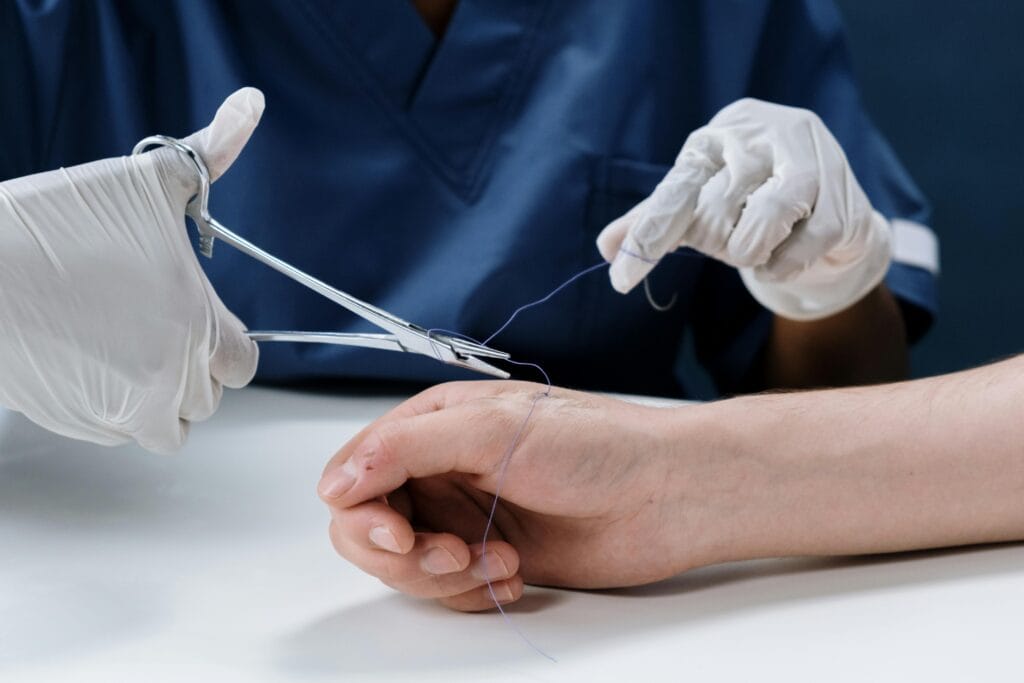Suturing is a fundamental skill in medical practice, essential for wound closure and optimal healing. Understanding the different suture techniques ensures precision, minimizes scarring, and promotes faster recovery. In this guide, we’ll explore the four most commonly used suturing methods, their applications, and best practices for each.

1. Interrupted Sutures (suture techniques)
Interrupted sutures are individually placed and tied, making them highly reliable for wound closure. Here’s how they work:
- The needle is inserted at a right angle to the incision, passing through both wound edges before exiting perpendicularly.
- The needle should be rotated (not dragged) to prevent tissue damage.
- The distance from the needle entry to the wound edge should match the tissue depth, with sutures spaced twice this distance apart.
- For linear wounds, starting with the middle suture and working outward ensures even tension.
Best for: High-tension areas, infected wounds (allows selective removal).
2. Continuous Sutures (suture techniques)
A continuous suture involves a single strand of suture material running along the wound in a series of connected stitches.
- The first stitch is placed like an interrupted suture, followed by continuous loops.
- Each pass should remain perpendicular to the wound, with the external thread appearing diagonal.
- An assistant maintains tension to avoid purse-stringing (excessive tightening) or excessive slack.
- Secure the end with an Aberdeen knot or by tying to the last loop.
Best for: Long, straight incisions with low tension (e.g., abdominal closures).
3. Mattress Sutures (suture techniques)
Mattress sutures provide superior wound edge alignment and come in two types:
Vertical Mattress Sutures
- Creates eversion (edges turned outward), reducing depression scars.
- Involves a deep pass followed by a more superficial return stitch.
Horizontal Mattress Sutures
- Provides strong wound approximation with minimal tension.
- Useful for thick or irregular tissue edges.
Best for: Deep wounds, fragile skin, or areas requiring precise edge alignment.
4. Subcuticular Sutures (suture techniques)
When cosmetic appearance is critical, subcuticular sutures are ideal:
- The suture runs beneath the epidermis, minimizing visible scarring.
- Can use absorbable or non-absorbable materials.
- Small, alternating bites are taken along the wound edges, gently pulling them together.
- Ends are secured with a buried knot, collar and bead, or left loose.
Best for: Facial wounds, plastic surgery, and areas requiring minimal scarring.
Choosing the Right Suture Technique
Selecting the best method depends on:
✔ Wound type (linear, irregular, deep)
✔ Tissue tension (high vs. low stress)
✔ Cosmetic concerns (visible vs. hidden areas)
✔ Healing requirements (infection risk, edema)
Final Thoughts (suture techniques)
Mastering these four suture techniques—interrupted, continuous, mattress, and subcuticular—ensures optimal wound closure and patient outcomes. By understanding their applications, medical professionals can enhance precision, reduce complications, and improve aesthetic results.
laparoscopic ports site closure
Ref: